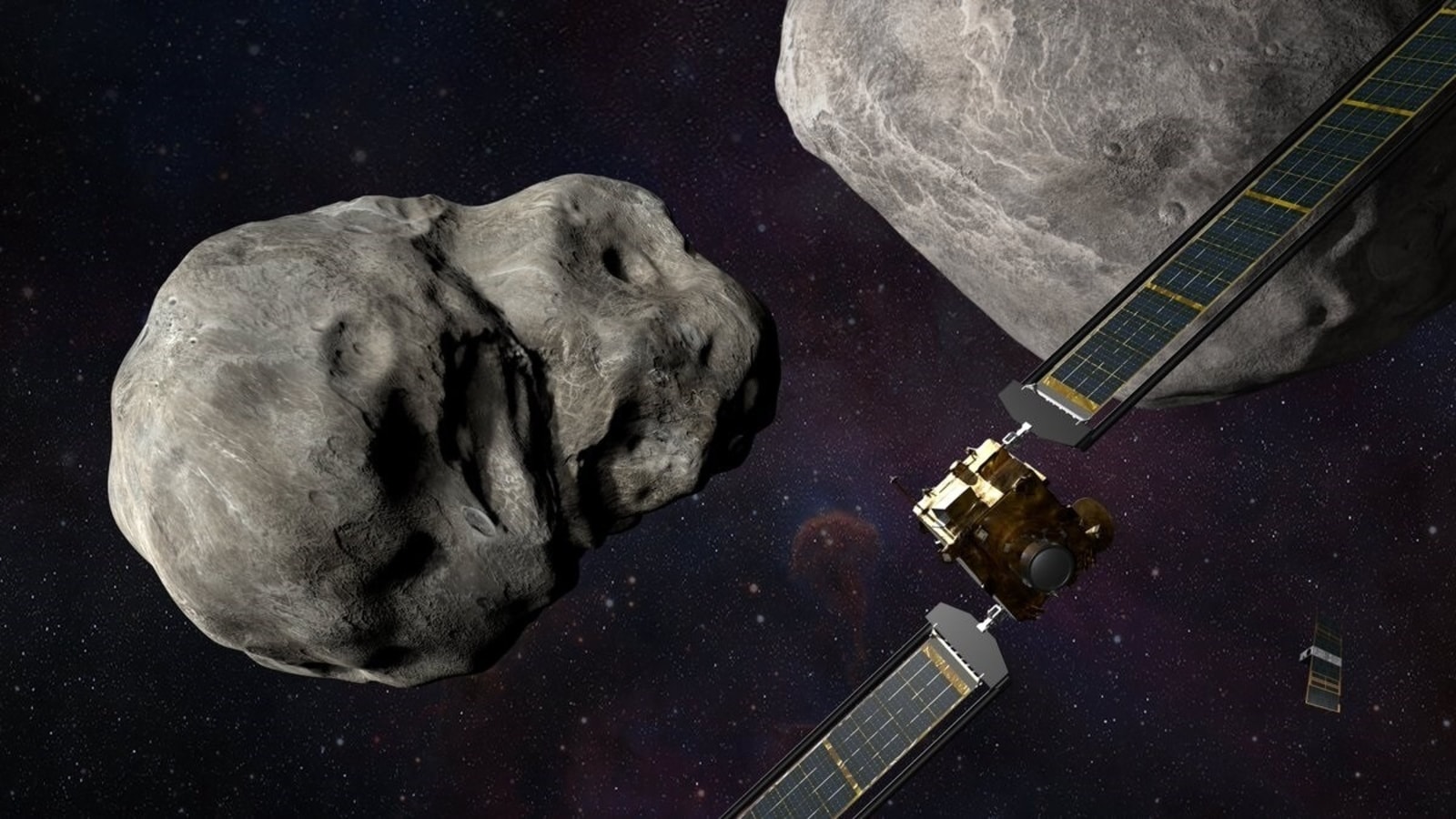How NASA will deal with asteroid that could hit Earth
NASA has warned against potentially hazardous asteroids heading towards Earth and it plans to use its DART mission to prevent a collision. Check out how it will work
NASA has reported several potentially hazardous asteroids coming close to Earth in the last few months. While they didn’t cause any harm to us, a little bit of a deviation in the trajectories of these asteroids might lead to disaster on Earth. Around 65 million years back when a giant asteroid hit the Earth, it resulted in the extinction of dinosaurs. Such dreaded events are not confined to the past only, it can happen in the future as well and may create havoc for humans. If an asteroid really makes contact with our planet it could create a massive threat to the very existence humanity. The space research organization has already picked a massive asteroid that it will experiment its technology on.
In attempts to deflect these potentially hazardous asteroids off of their current course and prevent collisions with Earth, NASA introduced the DART (Double Asteroid Redirection Test) mission last year in November. Here’s all you need to know about the NASA DART mission.
All about NASA’s DART mission
The Double Asteroid Redirection Test mission was launched only a month after an enormous asteroid named 2021 sm-3 went flying by Earth at breakneck speed with a diameter of around 525 feet on October 22, 2021. The space object was even bigger than the great pyramid of Giza in Egypt and the most frightening part about it was that scientists were able to detect the object just one month in advance of its passing by Earth. If the trajectory had slightly changed it could have created havoc on Earth. Hence, the DART mission was launched to prevent a horrific collision. The mission will come to a head this year when a 1210 pound spacecraft collides with a minor asteroid dubbed Dimorphos at a speed of roughly 4 miles per second in late September or early October 2022. The mission will hopefully modify the space rocks orbit around its bigger partner Didimos after the collision. Astronomers will measure the difference to see how efficient this kinetic impact approach of asteroid deflection is. And if the results will be substantial this might be used in the future if a rock lines up earth.
How does DART work?
The dart spacecraft has an electric propulsion technology that uses a constant flow of charged ions to deliver a mild push to get the spaceship going. It will circle around the Earth many times using its electronic engine to gradually build the necessary speed to break out from orbit and then start the long journey to Dynamos potentially passing another asteroid named 2001 cb21 along the way.
DART has science equipment aboard named Draco, and a high resolution camera that serves as a navigation system. It will launch an Italian space agency built Cubesat to witness the impact five days before it arrives. The primary spacecraft will be too far away from Earth for flight controllers to manage in real time so that it will convert to an autonomous navigation mode four hours before the impact.
For all the latest Technology News Click Here

